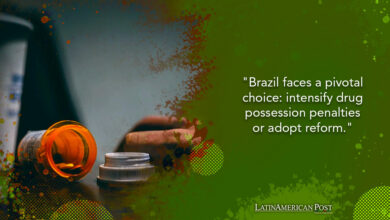Germán Vargas Lleras: economic policy for his presidential campaign 2018-2022
The politician seems to have four pillars set in his race to the Casa de Nariño

Leer en Español: Germán Vargas Lleras: política económica 2018-2022
Germán Vargas Lleras is the grandson of Carlos Lleras Restrepo, one of Colombia’s ex-president from 1966 to 1970. Both liberal politicians faced hard times in which the devaluation of the Colombian Peso seemed to be what everyone talked about. The first scenario was brought on due to a dispute with the International Monetary Fund, while the second came along as a result of the global shock in commodity prices in 2015.
Colombia is currently undergoing a recessive cycle. The falling interest rates have failed to be transmitted to personal credits and a general tax reform has diminished overall consumption. Germán Vargas Lleras was Juan Manuel Santos’ vice-president from the year 2014 to 2017. During said period, the politician pushed in favor of the FARC Peace talks and treaty; Vargas Lleras resigned due to this wish to run for office.
The 2016 Colombian Peace Referendum revealed that the South American nation’s voting base is only as much as 37.43% of the total population; 6.43 million votes make the difference in Latin American democracies. Since 50,2% of the voting population rejected the agreement while 49,8% accepted it, Germán Vargas Lleras sudden turn towards the official opposition is a strategic move towards neutrality.
Germán Vargas Lleras has an additional advantage as he used his vice-presidential term to execute what was known as “Lleras’ 100,000 house program”, in which the politician was the face of a micromanagement program that earned the likings of the opposition leader and former President Álvaro Uribe Vélez by giving out free houses to the nation’s poorest families.
The liberal politician’s first strategy towards the improvement of the Colombian economy resides on a boost for private investment, entrepreneurship, and formality. As a counter-cycle policy, the candidate aims to lower the business tax to 30%, strengthen tax payment controls, and impose law reforms to allow more entrepreneurs to access the formal sector.
A second strategy for the South American economy resides on the activation of the energetic sector, investments in roads, and fostering tourism. In addition, the candidate is inclined to spend on agricultural resources, whose profits would lead to an extended construction of homes linked in order to create employment policies to involve more citizens in the overall economy.
The third strategy hints towards the optimization of the current resources; 13% of the Colombian GDP is spent on education and health, but results don’t seem satisfactory. Carlos Lleras Restrepo’s grandson is committed to attend the needs of Colombian children.
A fourth and final strategy for the Colombian leader involves improving the state’s efficiency, including reform of the justice system. The liberal lawyer intends to reduce the size of the state and make it more of a provider than it is a regulator; public spending is expected to align with newer enterprises and kick-start them for the long term.
Latin American Post | David Eduardo Rodríguez Acevedo
Copy edited by Susana Cicchetto





